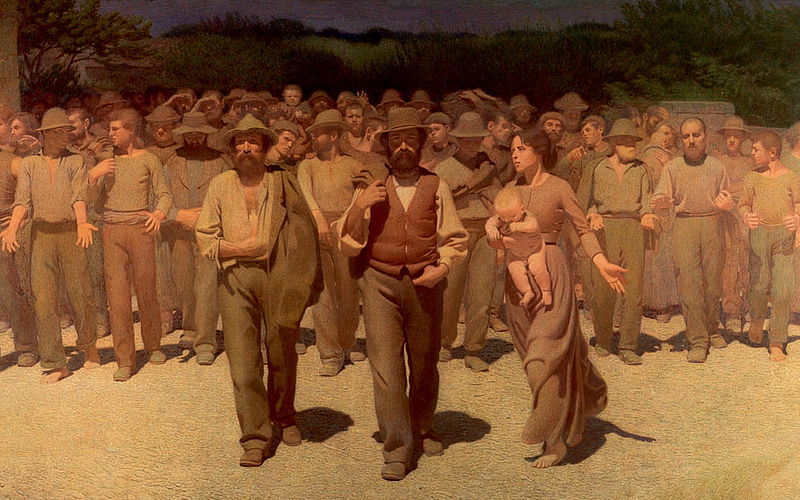
Writing for the website of the journal Salvage, sociologist and labor activist David Camfield discusses the historical developments that led to the decline of working-class political power, which peaked in the early and mid-twentieth century but seems almost nonexistent today. Camfield also explores what’s needed to reconstruct this power, beginning with the realization that we live in a different world than our socialist forebearers, so we cannot simplistically “apply” methods from their own time to ours. In other words, suggests Camfield, if the workers’ movement is to be rebuilt, it must be rebuilt on a different foundation. Read an excerpt from his piece below, or the full text here.
As the Italian marxists quoted at the outset put it, ours is “the slow time of reconstruction, reconstruction of ideas and material power of social subjects.” The extent of working-class decomposition imposes this pace on efforts to foster workers’ self-organization and solidarity. This temporality is terrifyingly out of synch with the speeds at which the climate change crisis is worsening and political events are happening (Brexit, Trump’s win, the growth of right-wing populist and fascist forces…). Although bold political initiatives and surprising wins are possible (the obvious lesson of, for example, the ascent of Corbyn-led Labour as well as the Sanders campaign and the emergence of a new left in the US, and, on a smaller scale, of the $15 and Fairness campaign in the Canadian province of Ontario), the advance of class-struggle politics is constrained by the political condition of the social forces on which these politics depend — not union officials or even union and community activists but the layers of the working class open to taking collective action against employers, landlords, corporate polluters, governments, and other state authorities when it seems that fighting back makes sense.
Recognizing this powerful constraint should direct our attention to the “need to start where the working class is, rather than where [we] might like it to be,” as Sheila Cohen puts it. A good first move is to try to listen and watch attentively, using theoretical tools but trying to avoid imposing preconceptions. Most of us can contribute in at least some small way to fostering elementary forms of resistance where we work or live, and in these increasingly unpredictable times (who foresaw Corbynism, the influx of thousands of radicalizing people into the Democratic Socialists of America, or the hopeful “#MeToo moment”?) there are sometimes opportunities to do more. We can support and learn from promising instances of working-class self-activity wherever they happen, from neighbourhood anti-austerity campaigns to strikes to initiatives for change within unions to anti-racist protests. We can acknowledge and try to overcome the unhelpful tendency of radicals on the margins to huddle together rather than engage with people who are taking action but haven’t yet drawn the conclusions we have. Intellectuals working in academic institutions can, in addition to organizing where we are, develop relationships with, to quote Cohen, our “‘organic’ counterparts — as facilitators, researchers and educators in the cause of developing actually existing class organisation and resistance.”
Image via Salvage.